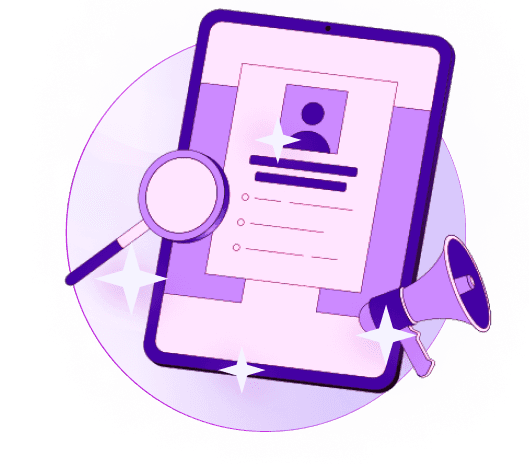Blogs
Articles

How to Use AI for Sales and Marketing: A Step-by-Step Guide for 2025 Results
Sales teams that use AI for sales and marketing report 83% revenue growth, while non-AI users lag behind at 66%.
The numbers look great, but only 1% of business leaders call their companies "mature" in AI deployment. This gap gives sales and marketing teams a huge chance to stay ahead. Digital channels will handle 80% of all buyer-supplier sales interactions by 2025, making AI tools crucial to success.
This piece lays out a clear path to implement AI for sales and marketing wins. We've created a step-by-step roadmap that covers everything from AI sales enablement basics to predictive analytics for sustained growth. Our guide will help you achieve measurable results in 2025 and beyond.
Understand the Role of AI in the Modern Workplace
AI adoption has transformed the modern workplace to new heights. Today, more than three-quarters of organizations use AI in at least one business function. Marketing and sales departments lead this tech revolution. This quick integration changes how people work in many industries.
AI mainly helps humans work better instead of replacing them. Companies use different technologies like machine learning, natural language processing, generative AI, and robotic process automation. These tools help solve problems and make decisions that humans used to handle alone. The systems look at big data sets, find patterns, and learn over time to give better insights.
Sales and marketing professionals get these remarkable benefits from AI:
Task automation: AI takes care of repetitive tasks like data entry, scheduling, and simple customer interactions, so employees can focus on strategic work
Better analytics: AI turns raw data into practical insights by spotting trends, connections, and unusual patterns faster than humans ever could
Customized engagement: AI creates tailored customer experiences and gives round-the-clock support through smart assistants
The economic effects are huge—McKinsey research shows AI could add up to $4.4 trillion to the global economy each year. Companies that use AI well report 50% higher revenue growth and 60% higher total shareholder returns than their competitors.
How AI is changing sales and marketing roles
AI technologies are changing sales and marketing roles faster than ever. Companies plan to invest more in AI over the next three years, with 92% increasing their budgets. Yet only 1% of these companies call themselves "mature" in AI deployment.
AI in the workplace statistics and trends
Sales and marketing professionals now make decisions at unprecedented speeds as they use real-time insights to act quickly. B2B commercial leaders report that only 21% of enterprises have adopted AI in their buying and selling processes. Business leaders often miss the true extent of AI usage in their organizations. They estimate 4% of employees use generative AI for at least 30% of their work, but actual numbers are three times higher.
AI and workforce collaboration models
Sales roles have evolved beyond simple persuasion to become AI-enhanced. AI tools have grown from basic assistants to powerful agents that handle complex tasks - from finding prospects to creating personalized outreach. Many traditional roles like Sales Development Representatives have become less important.
Millennials between 35-44 years lead the AI adoption charge. About 62% report high expertise with AI tools, compared to 50% of Gen Z and 22% of baby boomers. This blend of human skills and machine capabilities gives employees AI-powered assistants that help them work better and build authentic customer relationships.
Build a Foundation for AI Sales Enablement
A solid foundation must come before implementing AI for sales and marketing. The most advanced AI tools will fail without the right groundwork.
Assess your current tech stack and data quality
Your existing technology ecosystem needs a good look. Poor data quality costs organizations about $12.90 million every year. While 75% of businesses depend on CRM data, about 60% of that data ends up incomplete, wrong, or old. Start by checking your CRM system's duplicate records, empty fields, and old information. Your data's accuracy, completeness, consistency, and timeliness will directly affect how well your AI performs.
Select AI tools that integrate with your CRM
After your assessment, pick AI solutions that merge with your current systems. Look for platforms that have advanced natural language processing and machine learning capabilities. The best options are easy-to-use interfaces that your sales team will want to use. Salesforce and similar platforms give you budget-friendly solutions that bring together data from sales, service, and marketing teams to show the full customer picture.
Create a roadmap for AI adoption
A well-laid-out implementation plan comes next. Define your AI goals to match your business strategy. Start with projects that need minimal changes. Add AI assistants to your seller's daily tasks one at a time - focus on one workflow, one role, and one task you can repeat. This step-by-step approach will lead to lasting adoption and real results.
Implement AI for Personalization and Automation
The next strategic step after establishing your foundation is putting AI to work in practical ways. Persana and platforms like it now provide innovative solutions that turn AI's theoretical benefits into measurable results.
Hyper-personalized outreach using behavioral data
AI-driven personalization studies customer data to create messages that strike a chord with each recipient. This targeted approach boosts reply rates by 20-40% by utilizing 350+ insights from millions of contacts. Each message adapts to specific data, interests, and behavior patterns.
AI-powered content generation and optimization
Most marketers (67%) say AI helps them create content faster. AI content tools study audience priorities to produce relevant blog posts, emails, and social media content. These tools also optimize content to improve engagement and search visibility.
Automated lead nurturing and follow-ups
AI lead nurturing systems sort prospects automatically based on their behavior, demographics, and engagement levels. Your team can set up tailored follow-up sequences that trigger when customers take specific actions. This automation keeps communication consistent and lets your team concentrate on high-value activities.
Real-time AI coaching for sales reps
AI sales coaching gives tailored, up-to-the-minute feedback during customer interactions. These systems evaluate conversations for tone, clarity, empathy, and objection handling. Teams can reduce onboarding time by 50%. Sales teams with AI coaching achieve 25-40% higher conversion rates.
Drive Long-Term Growth with AI Insights
AI's true power goes beyond implementation. It stimulates strategic growth through advanced insights. Companies that use AI for data-driven decision making show 45% higher usage in strategic functions like new product ideas and market identification.
Use predictive analytics to guide decisions
Predictive analytics turns big datasets into practical business intelligence. Organizations with AI-powered analytics can detect hidden patterns and correlations that humans might miss. The move from reactive to proactive decision-making helps businesses anticipate challenges early and capture opportunities before competitors. McKinsey reports that AI strengthens strategic activities by reducing human biases while boosting analysis and insight creation.
Forecast sales with AI-powered models
AI sales forecasting makes predictions more accurate and reliable. Sales operations leaders find it harder to create accurate forecasts now than three years ago, with 67% reporting this challenge. AI solves this problem by:
Identifying opportunities at risk with immediate health assessments
Providing visibility into individual rep performance at each stage
Making resource allocation and planning better
Improving win rates through focused prioritization
83% of sales teams using AI saw revenue growth compared to just 66% of teams without it.
Use AI for market trend detection
AI stands out at spotting emerging market signals well before they affect revenue. Smart algorithms analyze everything from social media trends to patent volumes and help businesses know when trends speed up or slow down. AI-powered engines read massive amounts of information and break down trends into component patterns. This creates a competitive edge in market responsiveness. Sales teams can keep up with trends in customer needs and market dynamics using tools like Persana.
Line up AI strategy with business growth goals
Your AI adoption needs clear connection with overall business objectives. By 2029, growth and expansion will be the main goal of AI at 67% of companies. Start by finding specific problems your organization needs to solve. Create a roadmap that prioritizes early successes with tangible value. Your AI models need regular monitoring to support growth goals while adapting to market changes.
Conclusion
AI has changed how businesses handle their sales and marketing operations. It creates new opportunities for companies ready to accept new ideas. Companies that use AI perform better than their competitors. They achieve 13-15% higher revenue and improve ROI by 10-20%. A gap exists between planned investments and actual implementation, which creates a competitive advantage ready to be claimed.
Success with AI needs careful planning. Your first step should be evaluating your technology setup and data quality. Pick AI tools that blend with your current systems naturally. A step-by-step plan helps you add AI into your daily work routine.
AI becomes your sales and marketing teams' strongest ally after proper implementation. Without doubt, features like individual-specific targeting, automated content creation, and live coaching improve efficiency. These features also create better customer experiences. Your teams can build real relationships instead of doing repetitive work.
By 2025, AI will become a must-have tool as 80% of buyer-supplier interactions move to digital channels. AI delivers real value when it matches your business goals and growth targets. Companies that add AI thoughtfully now will lead the market. Those who wait risk falling behind their competitors.

Create Your Free Persana Account Today
Join 5000+ GTM leaders who are using Persana for their outbound needs.
How Persana increases your sales results
One of the most effective ways to ensure sales cycle consistency is by using AI-driven automation. A solution like Persana, and its AI SDR - Nia, helps you streamline significant parts of your sales process, including prospecting, outreach personalization, and follow-up.



